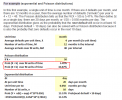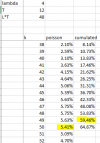Please use this new thread to let David and I know about any errors, missing/broken links, etc. that you find in the 2021/2022 materials that are published in the study planner under P2.T6. Credit Risk. This will keep our forum much more organized. We appreciate your cooperation! 
PLEASE NOTE: Our Practice Question sets already have links to their specific forum threads where you can post about any errors that you find. This thread is for any other materials (notes, spreadsheets, videos, etc.) where you might find errors.
Information needed for us to correct errors:

PLEASE NOTE: Our Practice Question sets already have links to their specific forum threads where you can post about any errors that you find. This thread is for any other materials (notes, spreadsheets, videos, etc.) where you might find errors.
Information needed for us to correct errors:
- Reading
- Page number
- Error
Last edited:






